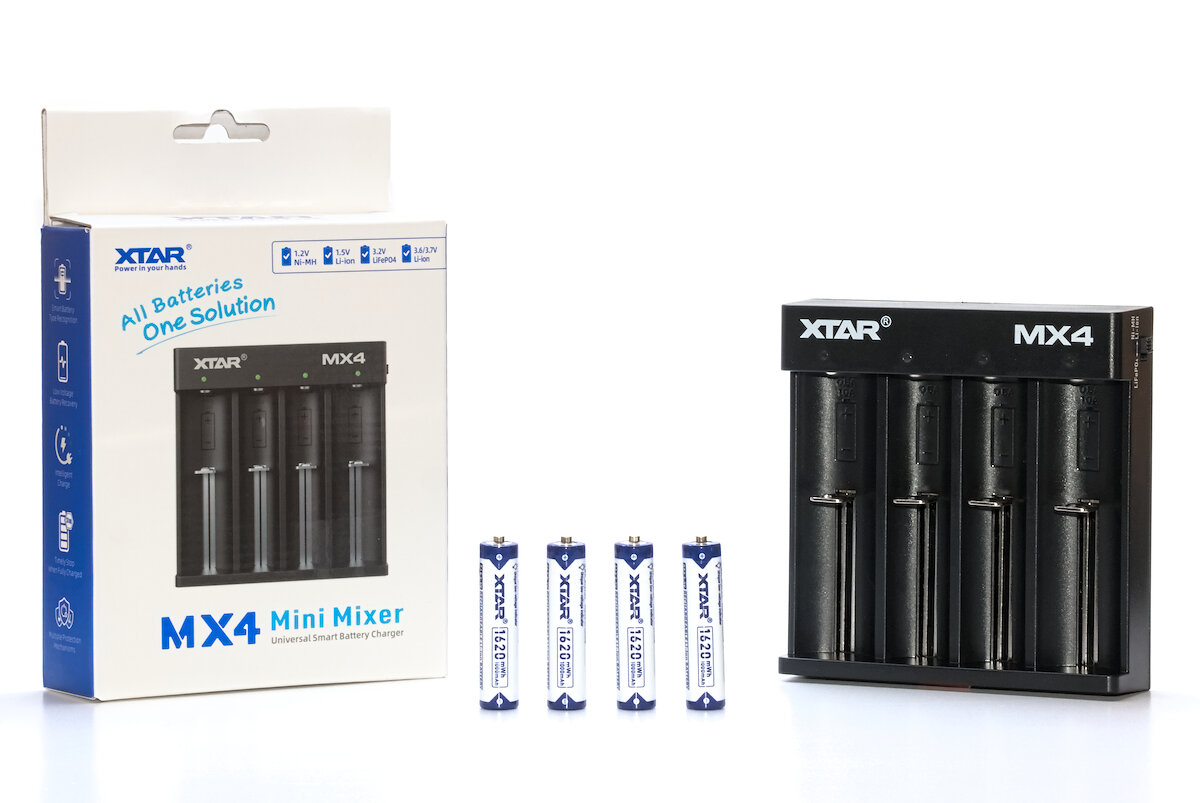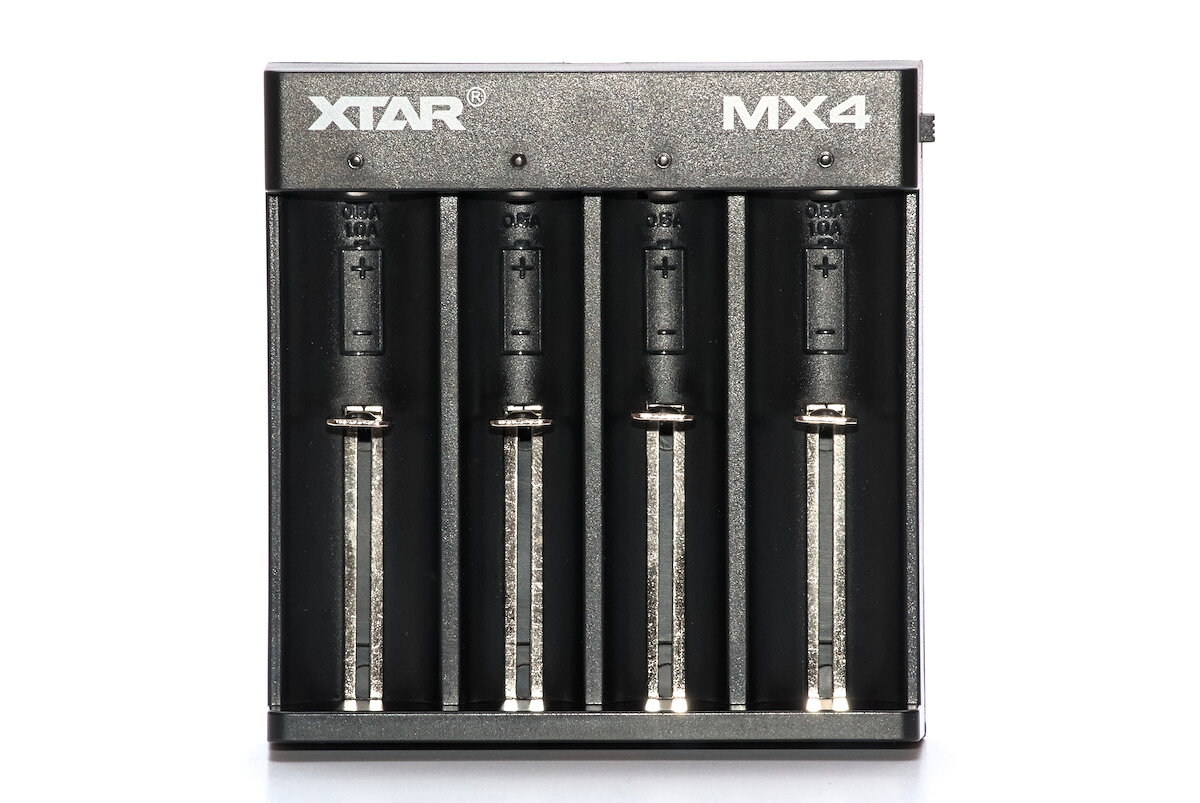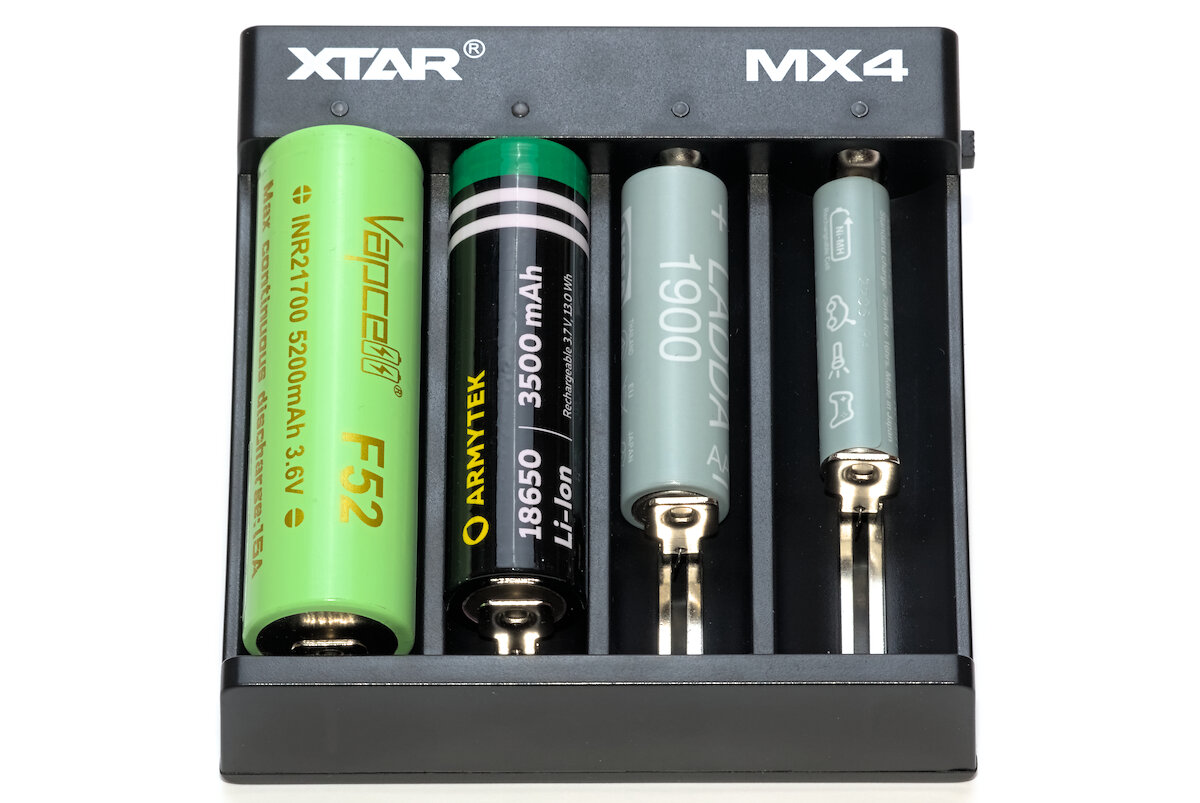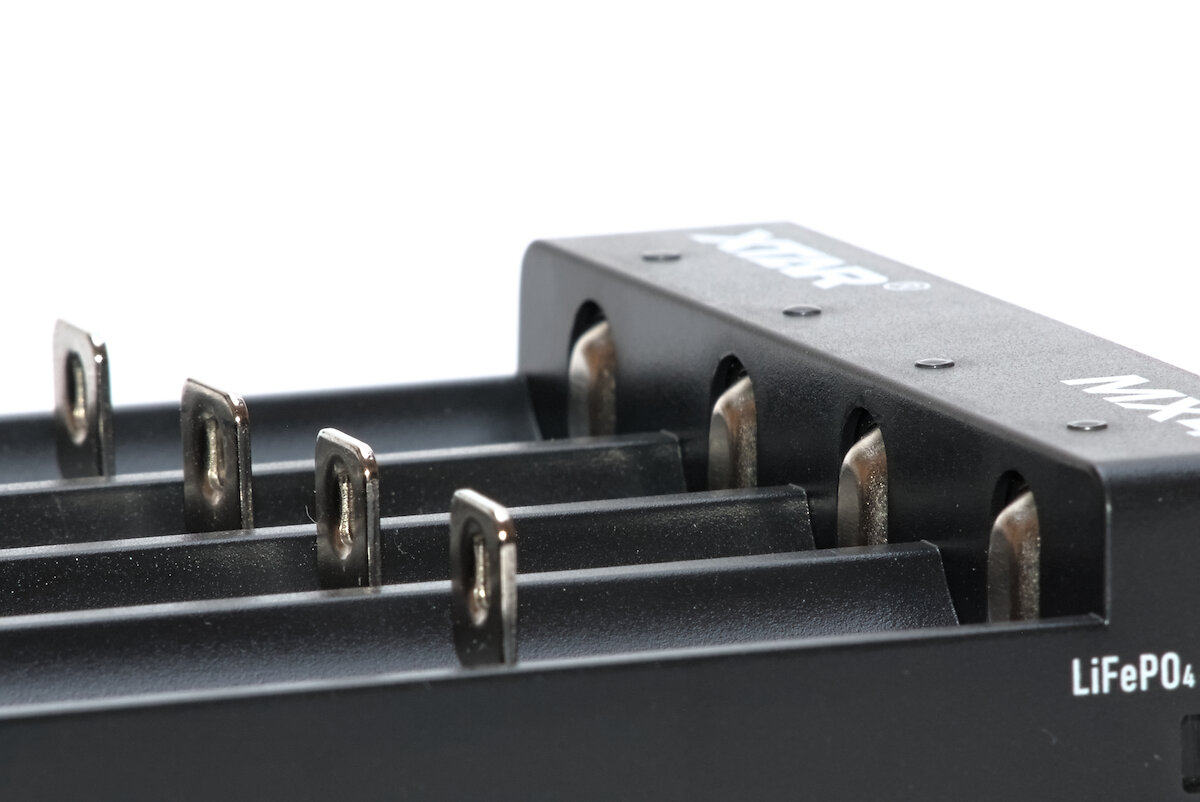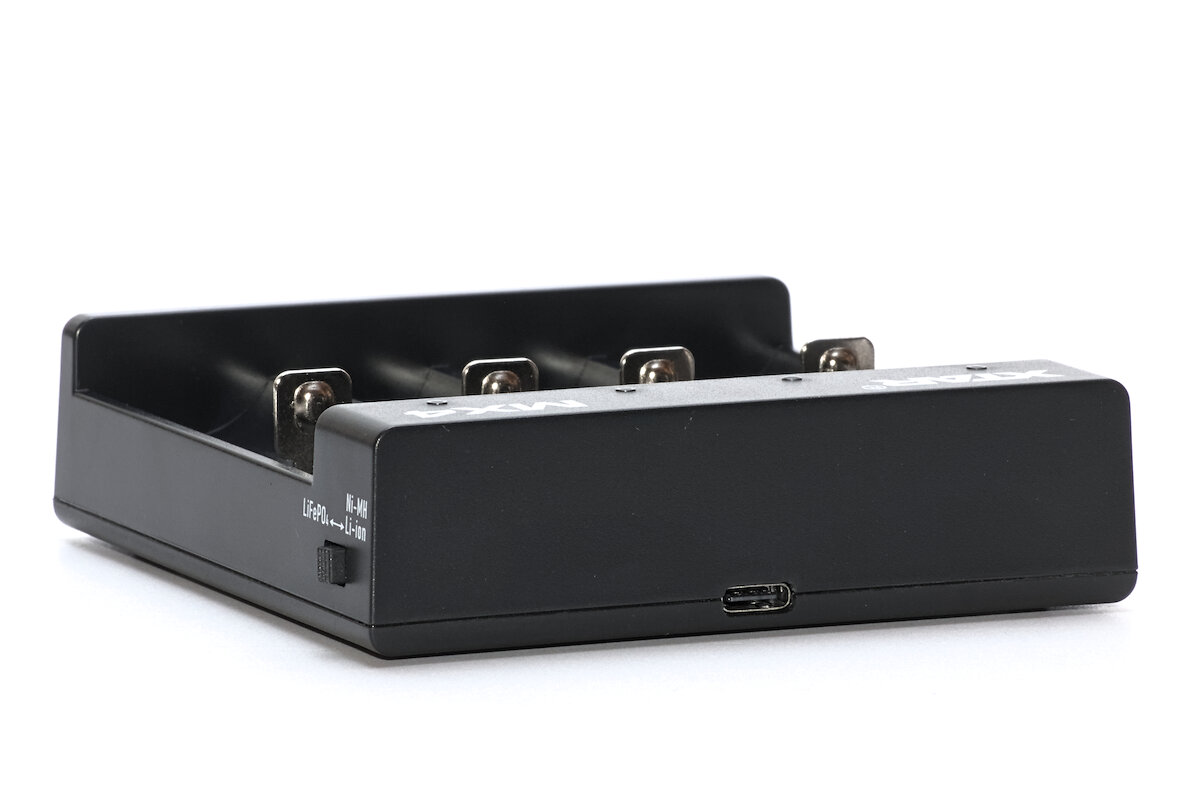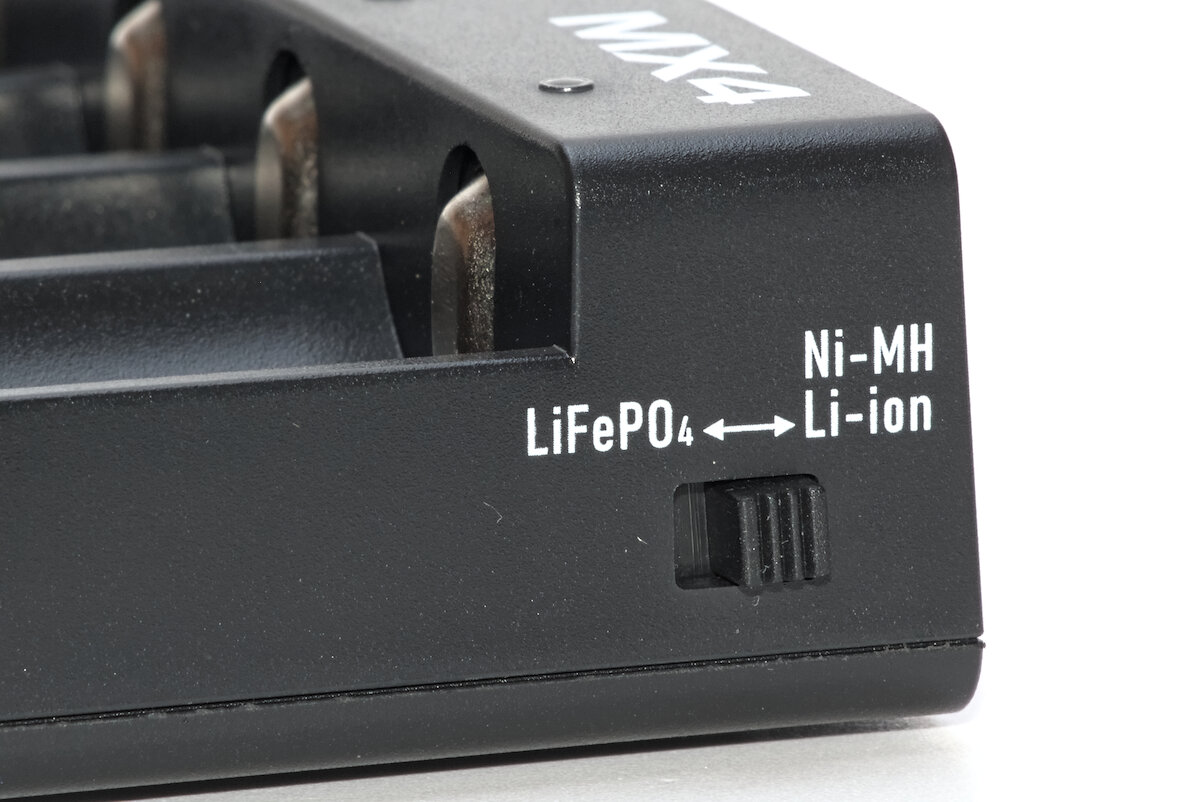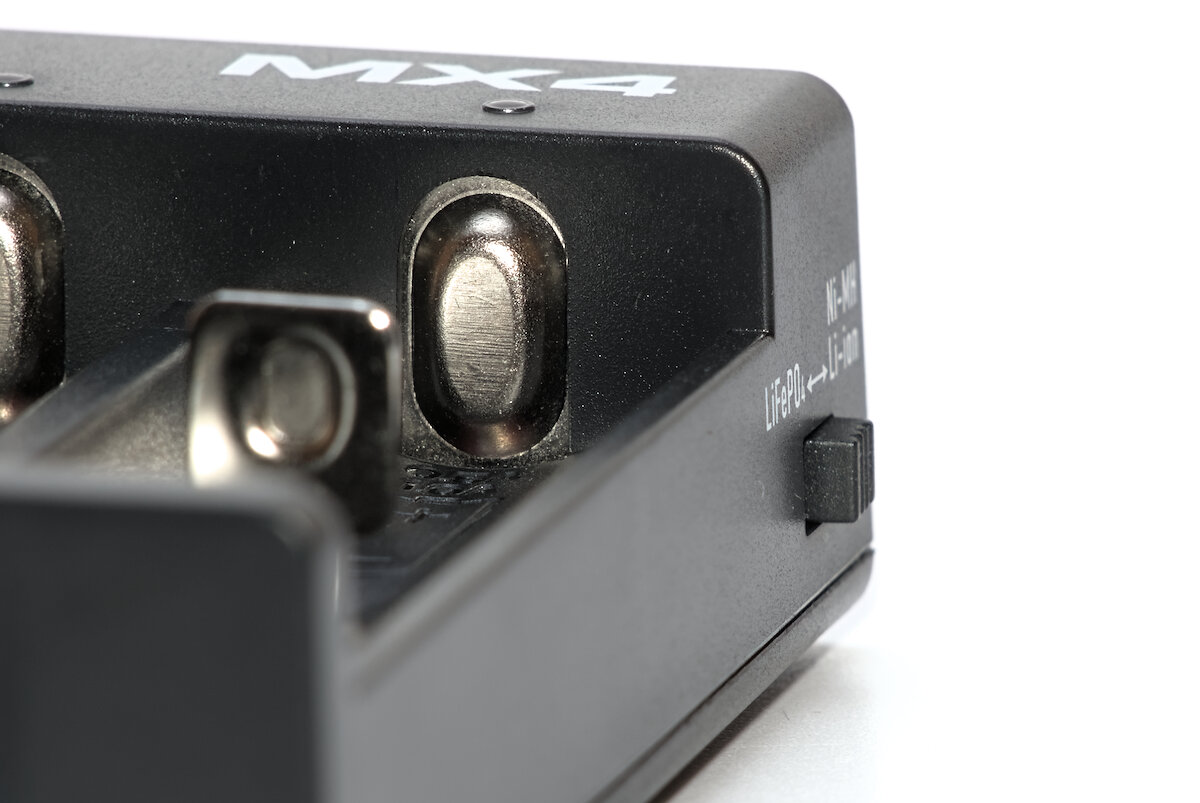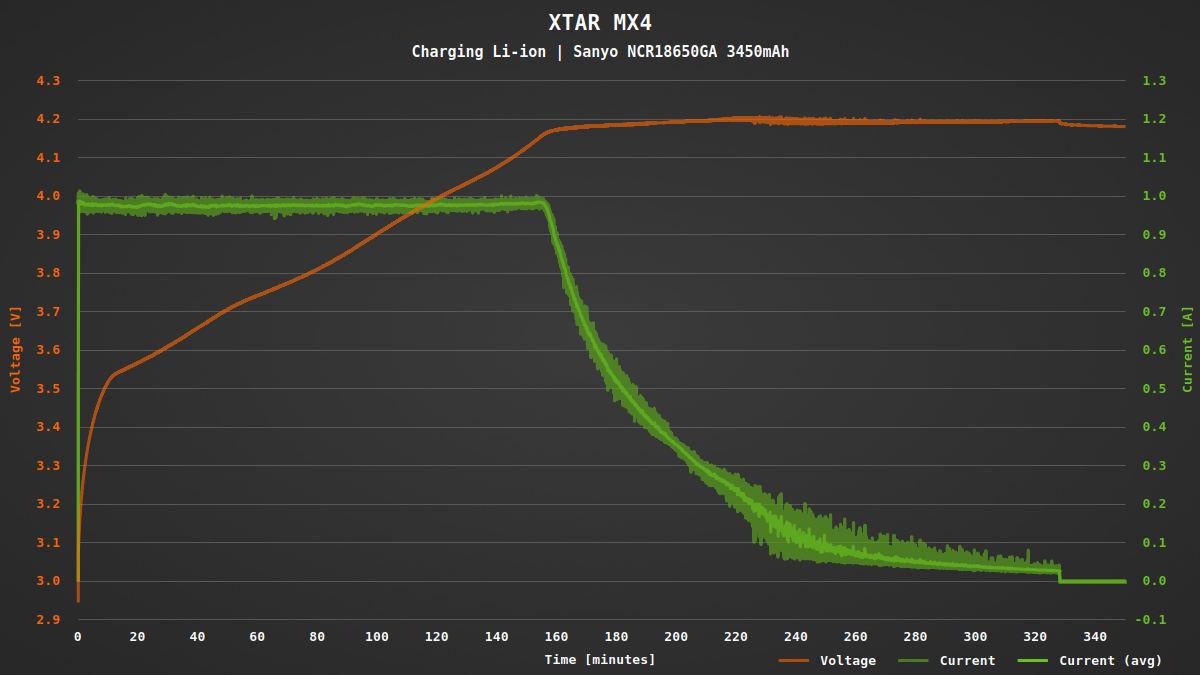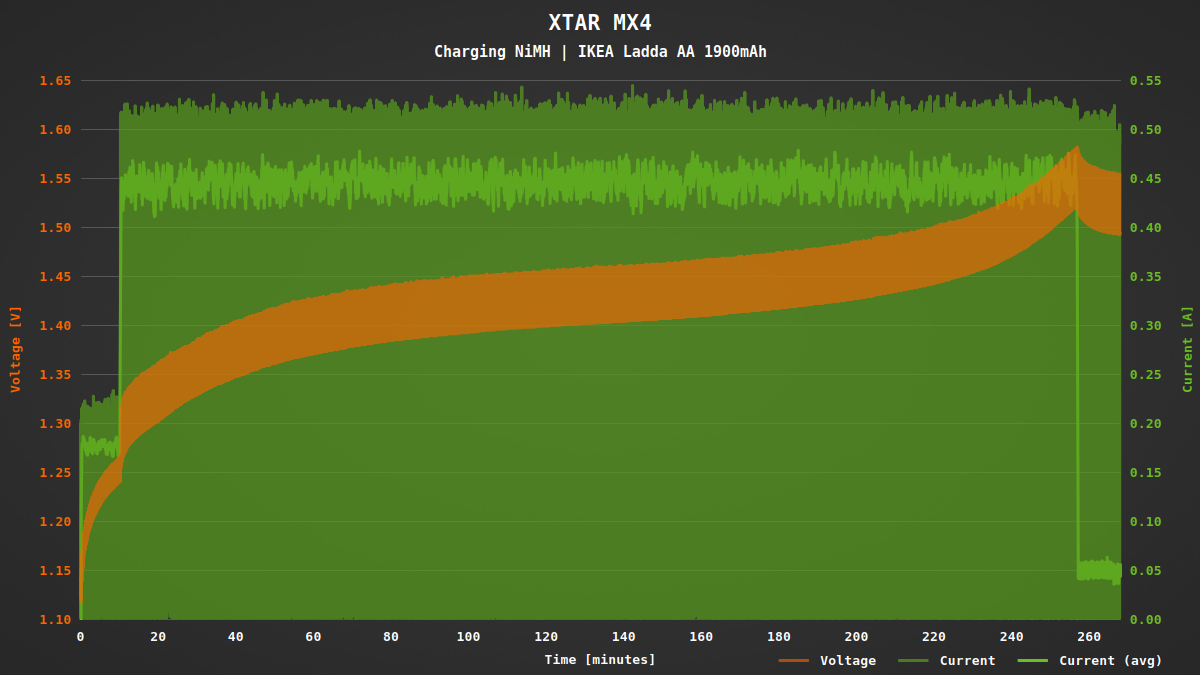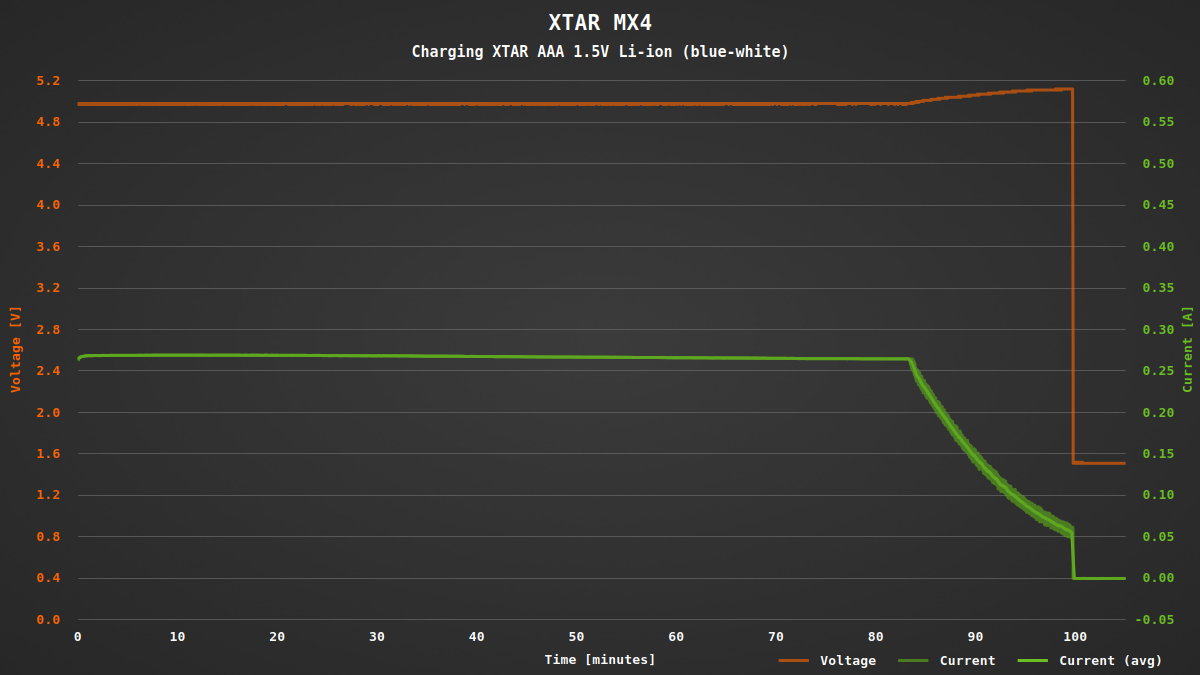Little review of the new XTAR MX4 charger for NiMH, Li-ion, LiFePO₄ and 1.5 V Li-ion batteries.
You can find the German version of this review on my website: SammysHP Blog › XTAR 1,5 V 1620 mWh AAA Akkus und MX4
The charger was provided by the manufacturer for this review. Thank you very much!
Overview
The MX4 charges NiMH, Li-ion, LiFePO₄ and 1.5 V Li-ion batteries.
Size: 100 × 97 × 27 mm
Weight: 95 g
It comes with a manual in 11 languages (CN, DE, IT, EL, EN, FR, TR, PL, RU, SP, JA).
Four batteries can be charged at once. The bays have a length from 32 to 71 mm. Unprotected flat top 21700 batteries will fit, button top depends on the battery, protected no chance. The two middle bays have a width of 21 mm, the outer bays are wider to accept 26650 batteries.
Both sides of the terminals are slightly protruding. This works for most types of batteries, although I had problems with a few small AAA batteries with thick wrapper and some flat-top batteries with very recessed positive terminal.
The sliders are a little rough, but without jamming, even when the batteries are inserted at a steep angle.
Every bay has a status LED above it:
| Color | Meaning |
|---|---|
| Green: | Standby / finished charging |
| Red: | Charging Li-ion/NiMH/1.5 V |
| Orange: | Charging LiFePO₄ |
| Red, slowly blinking: | Detecting battery type or activation mode |
| Red, quickly blinking: | Error |
Activation mode slowly charges the battery to reset the protection circuit or to recover a deeply discharged battery.
The charger is powered via a USB-C port at the back. Simple 5 V and 2 A input.
The simple and sleek design is interrupted by the only switch on the device: a protruding slider to select between LiFePO₄ and 4.2 V Li-ion.
Because this switch is probably not used that often, it would be nice to have it flat with the case.
Charging
Li-ion batteries are charged either with 1 A (two batteries) or 0.5 A (four batteries). The charging current cannot be changed manually. Might be a little high for small batteries or slow for large batteries. The current is a little noisy, but that shouldn’t affect charging. Also termination current is very low, thus it takes a long time for the status LED to switch to green. After termination the batteries are slowly discharged with a 3 mA pulse every two seconds.
NiMH batteries are charged with around 180 mA in the detection phase for up to ten minutes. The regular charging current is 500 mA and cannot be changed. Again, this could be high for some small batteries. The graph looks a little wild due to the charging algorithm for NiMH batteries (OCV measurement every few seconds).
Not sure how the charger decides when to stop charging. It terminates a little early, just before the battery is full. This can be different for other batteries. After termination it trickle charges the battery with 50 mA in average (pulsed). This is unnecessary for modern LSD batteries and can shorten their life. Thus it is better to remove the batteries as quickly as possible when the status LED shows green.
Charging 1.5 V Li-ion batteries is simple as they contain their own charging controller. The “charger” only has to supply 5 V (or close enough). At the end the MX4 turns off the power for the bay and it shows the 1.5 V from the battery.
I don’t have LiFePO₄, so I couldn’t test this charging mode. But I guess the MX4 just reduces the target voltage from 4.2 V to around 3.6 V. Maybe this can be used as a storage mode for Li-ion batteries (if they were discharged previously)?
If you unplug the power supply, the MX4 draws up to 4 mA from Li-ion batteries (no current with NiMH). So don’t store your batteries in the charger.
Conclusion
The XTAR MX4 is a simple and small (travel) charger supporting NiMH, Li-ion, LiFePO₄ and 1.5 V Li-ion batteries. With (almost) nothing to set up, it’s as simple as inserting the batteries and wait until the status LED turns green.
